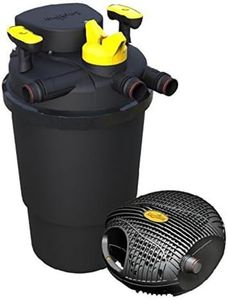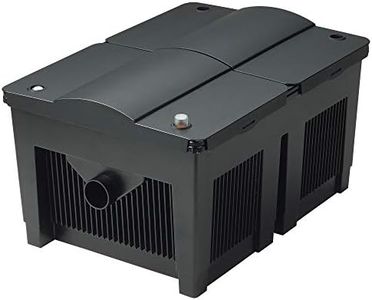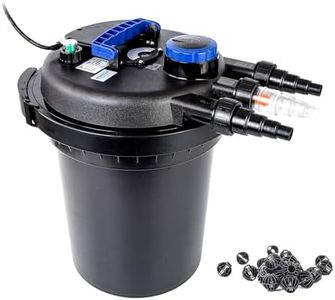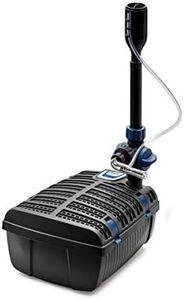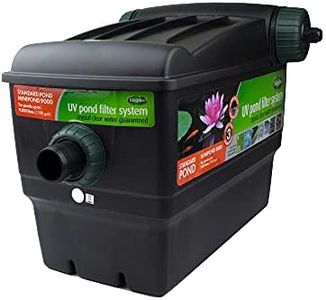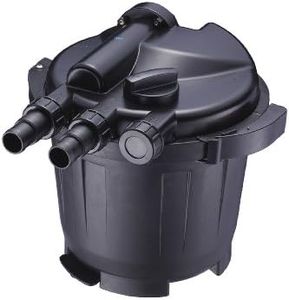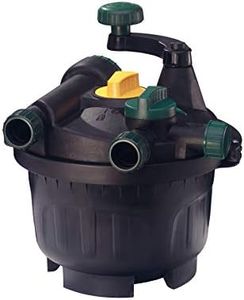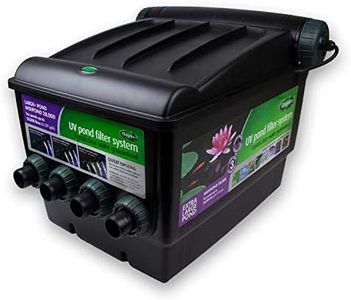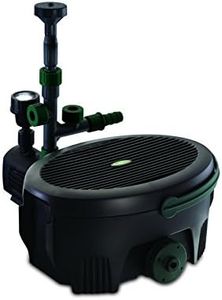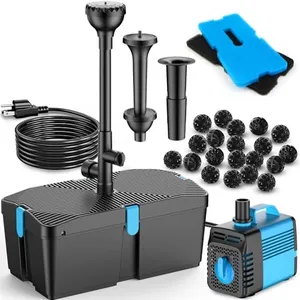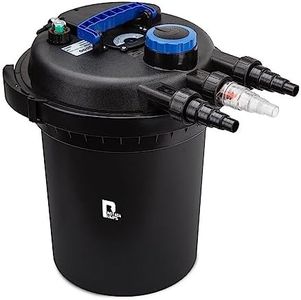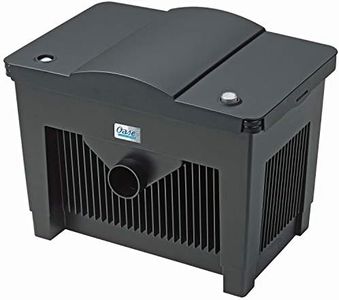We Use CookiesWe use cookies to enhance the security, performance,
functionality and for analytical and promotional activities. By continuing to browse this site you
are agreeing to our privacy policy
10 Best Pond Filter
From leading brands and best sellers available on the web.Buying Guide for the Best Pond Filter
Choosing the right pond filter is essential for keeping your pond water clean, clear, and healthy for plants and animals. When shopping for a pond filter, you want to consider the size of your pond, the number and type of fish, sunlight exposure, and how often you wish to maintain the system. Understanding the main specifications will help you select a filter that not only fits your pond’s needs but also makes maintenance simple and efficient.Pond Capacity (Gallons/Liters)Pond capacity refers to the maximum volume of water that a filter is designed to handle. This is crucial because a filter that's too small won't effectively keep the water clean, leading to health problems for fish and murky water. Filters are labeled with their recommended pond size, often listed in gallons or liters. Smaller filters (for ponds under 500 gallons) are suitable for tiny backyard water gardens, while medium filters (500-2000 gallons) cover most garden ponds, and large filters (over 2000 gallons) are best for koi ponds or larger water features. To pick the right one, estimate the actual volume of your pond and consider fish load—a heavily stocked fish pond may need a larger or more powerful filter than one only containing plants.
Type of Filtration (Mechanical, Biological, UV)Filters clean water in different ways: mechanical (removing debris like leaves and dirt), biological (using bacteria to break down harmful chemicals), and UV (using ultraviolet light to kill algae and pathogens). Many modern pond filters combine all three. Mechanical-only filters are good for ponds without fish or with minimal plant life. Biological filters are essential if you keep fish, as they help process waste safely. UV filters are useful if you struggle with green, murky water due to algae. Your pond’s needs guide your choice: combine filtration types for a balanced, healthy pond, especially if you have fish and plants together.
Flow RateFlow rate is the amount of water the filter can process per hour, usually shown in gallons per hour (GPH) or liters per hour (LPH). This number tells you how quickly the filter cleans the pond water. Ideally, the filter should circulate the entire volume of your pond at least once every 1–2 hours. Low flow rates are fine for small, lightly stocked ponds, while high flow rates are important for large or heavily stocked ponds. To pick the right flow rate, divide your pond’s volume by the desired turnover rate. If you have a lot of fish or live in a warm, sunny area (which encourages algae growth), choose a filter with a higher flow rate.
Installation Type (External vs. Submersible)Some pond filters are installed outside the pond (external/pressure filters), while others go inside the pond (submersible/box filters). External filters are generally more powerful and easier to access for cleaning, making them ideal for larger ponds or those with many fish. Submersible filters are simpler to hide and install in small decorative ponds or water gardens with few fish. Choosing between them depends on your pond size, how visible you want the filter to be, and how easy you want filter maintenance to be.
Ease of MaintenanceEase of maintenance refers to how simple it is to clean and take care of the filter. Some filters require frequent disassembly to clean mechanical sponges or media, while others have easy-clean features like backflush valves or cleaning handles. If you prefer to spend less time on pond upkeep, look for filters with easy-clean features and accessible parts. If you’re often away from home or want a low-maintenance solution, this spec becomes especially important.
